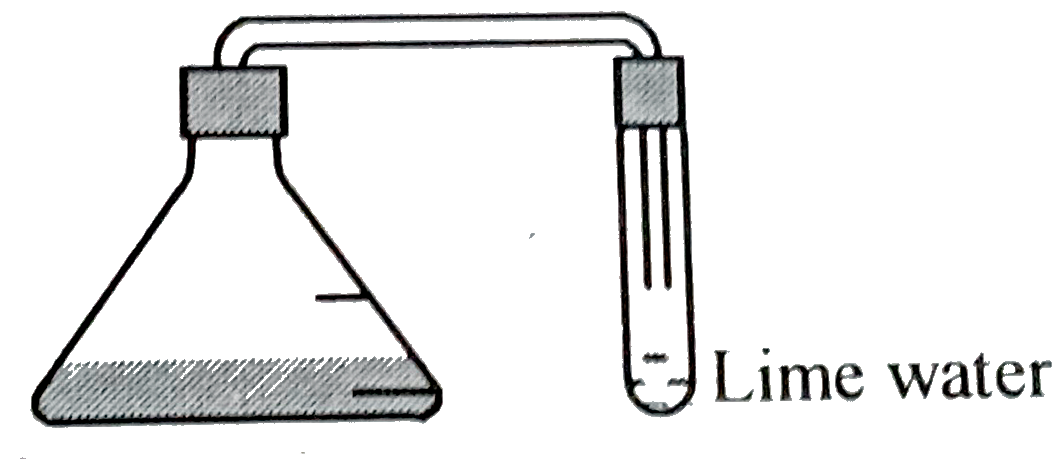Assertion:The inner ear contains three ossicles (malleus, incus and stapes) which are attached to one another in a chain-like fashion.
Reason:The stapes is attached to the tympanic membrane and the malleus is attached to the oval window of the cochlea.
If both assertion and reason are true and reason is the correct explanation of assertion.
If both assertion and reason are true but reason is not the correct explanation of assertion.
If assertion is true but reason is false.
If both assertion and reason are false.
The correct Answer is:D
The middle ear contains three ossicles called malleus, incus and stapes which are attaced to one another in a chain-like fashion. The malleus is attaced to the tympanic membrane and the stapes is attached to the oval window of the cochlea. The car ossicles increase the efficiency of transmission of sound waves to the inner ear.
Topper's Solved these Questions
Similar Questions
Write the incus, malleus and stapes ear ossicles is correct sequence and give their overall function.
View SolutionThe break-down of glucose in a cell occurs in any of the following pathways :

Three experiments (A, B, C) have been set up. In each experiment, a flask contains the organism in growth medium, glucose and a brown dye that changes its colour to yellow when the pH decreases. The mouth of the flask is attached to a test tube containing lime water (Calcium hydroxide , as shown in the figure) . In C, but not in A and B , air is removed from the flask before beginning the experiment.
After a period of growth, the following observation were made :
A : Lime water turns milky , the dye colour remains the same
B : The dye colour changes , lime water does not turn milky
C : Lime water turns milky , the dye colour remains the same

(a) Question : Identify which of the reactions is the pathways depicted above is taking place in each experiment . Give reasons for your answer .
(b) Question : Identify which of the reactions in the pathways depicted above is expected to occur in Red Blood Cells (RBCs)View Solution
Knowledge Check
- Question 1 - Select One
Assertion : Tendons attach one bone to another bone
Reason : Ligaments attach skeletal muscles to bones.AIf both assertion and reason are true and reason is the correct explanation of assertionBIf both assertion and reason are true but reason is not the correct explanation of assertionCIf assertion is true but reason is falseDIf both assertion and reason are false - Question 2 - Select One
Assertion : The metabolic pathway through which the electron passes from one carrier to another is called the electron transport system (ETS)
Reason : ETS is present in the inner mitochondrial membrane.AIf both assertion and reason are true and reason is the correct explanation of assertionBIf both assertion and reason are true but reason is not the correct explanation of assertionCIf assertion is true but reason is falseDIf both assertion and reason are false - Question 3 - Select One
Although millions of organic compounds are known, the elements they contain are very few: C(always), H(almost), N,O a halogen, S,P (often), and sometimes another element. The great number and variety of organic compounds are a result of which of the follocwing?
(i) Carbon is in group 14 of the periodic table and forms bonds with almost every other element(other than the noble gases).
(ii) Carbon atoms have the ability to bond to other carbon atoms in single and multiple bonds, forming long chains, branched chains, and rings (that may also have chains attached to them) of various lengths.
(iii) The existanece of different carbon compounds with identical molecular formulas called isomers.
(iv) Other kinds of atoms such as nitrogen, oxygen, and sulphur may be attached to the carbon atoms by single and//or multiple bonds.A(1) (i), (ii), (iii)B(2) (i), (ii), (iv)C(3) (i), (ii), (iii), (iv)D(4) (i), (iii), (iv)
Enzymes of Krebs cycle occur in mitocho-ndrial matrix except one which is attached to inner mitochondrial membrane
View SolutionAssertion: In hydrazoic acid oxidation state of nitrogen is −13
Reason: In hydrazoic acid three nitrogen are attached to one hydrogen atom.View SolutionGiven below are some of the process which takes place in our ear when we are exposed to any sound. Arrange these in the correct order of sequence.
(a)The eardrum vibrates the transmits the sound wave to the ear ossicles.
(b) Vibration travel from oval window to the fluid of cochlea.
(c) Ripples in the basilar membrane band the hair cell against the tectorial membrane
(d) Generation of waves in the lymphs.
(e ) sound waves are collected
by the pinna.
(f) generation of nerve impulse and transmission through auditory nerves to the brainView SolutionRead the passage given below and answer the following questions:
The objects which are non-superimposable on their mirror image (like a pair of hands) are said to be chiral and this property is known as chirality. Chiral molecules are optically active, while the objects, which are, superimposable on their mirror images are called achiral. These molecules are optically inactive. The above test of molecular chirality can be applied to organic molecules by constructing models and its mirror images or by drawing three dimensional structures and attempting to superimpose them in our minds. There are other aids, however, that can assist us in recognising chiral molecules. One such aid is the presence of a single asymmetric carbon atom. In these questions a statement of assertion followed by a statement of reason is given . Choose the correct answer out of the following choices.
Assertion (A): A racemic mixture containing two enantiomers in equal proportions will have zero optical rotation.
Reason (R): This is because the rotation due to one isomer will be cancelled by the rotation due to the other isomer.View SolutionAssertion : Both aldehydes and ketones contain carbonyl group.
Reaction : In aldehydes, the functional group is attached to atleast one hydrogen atom.View Solution

